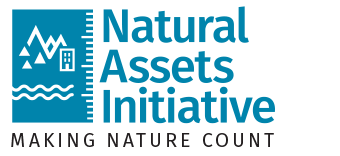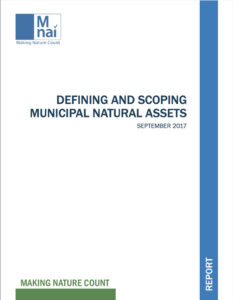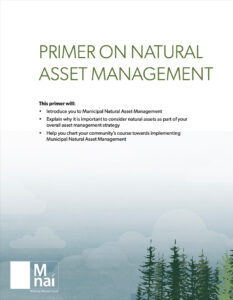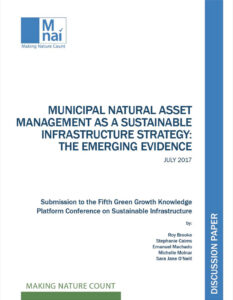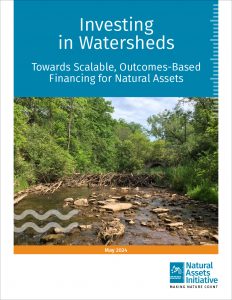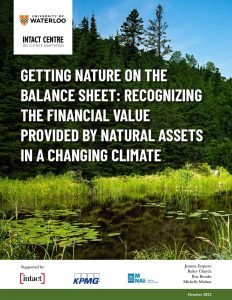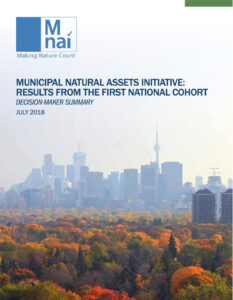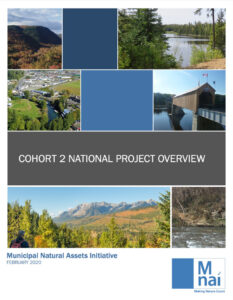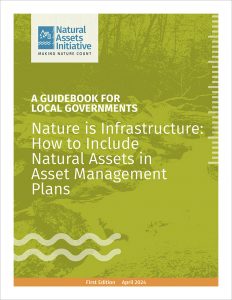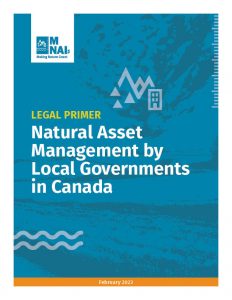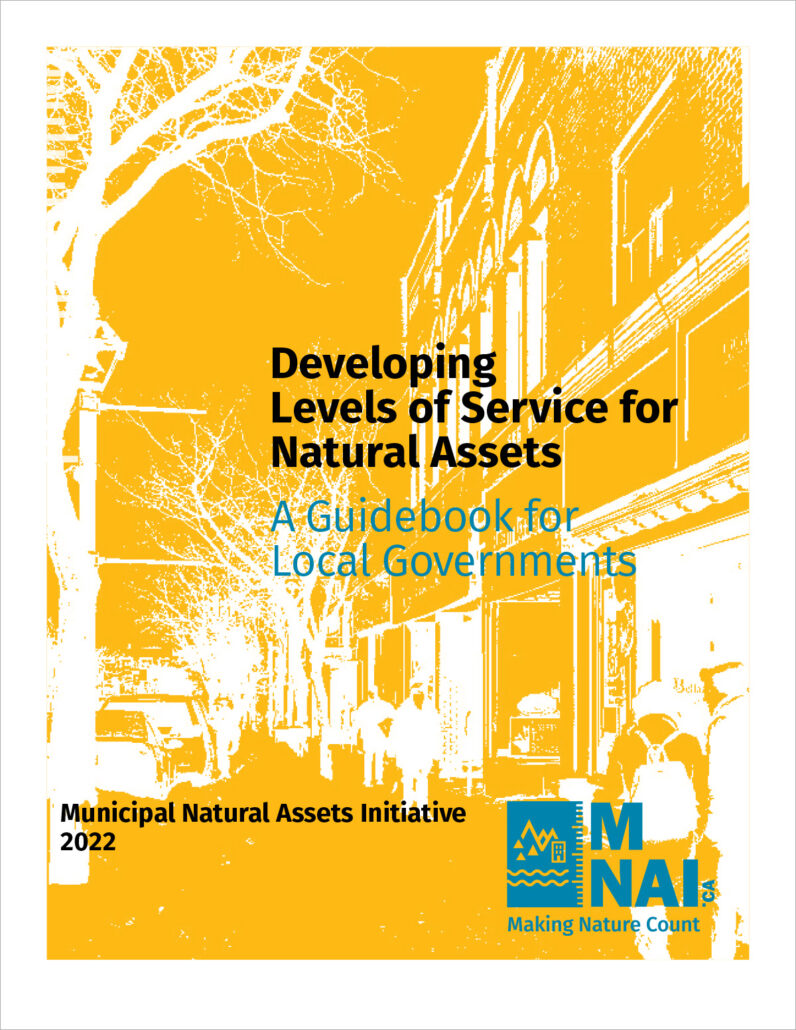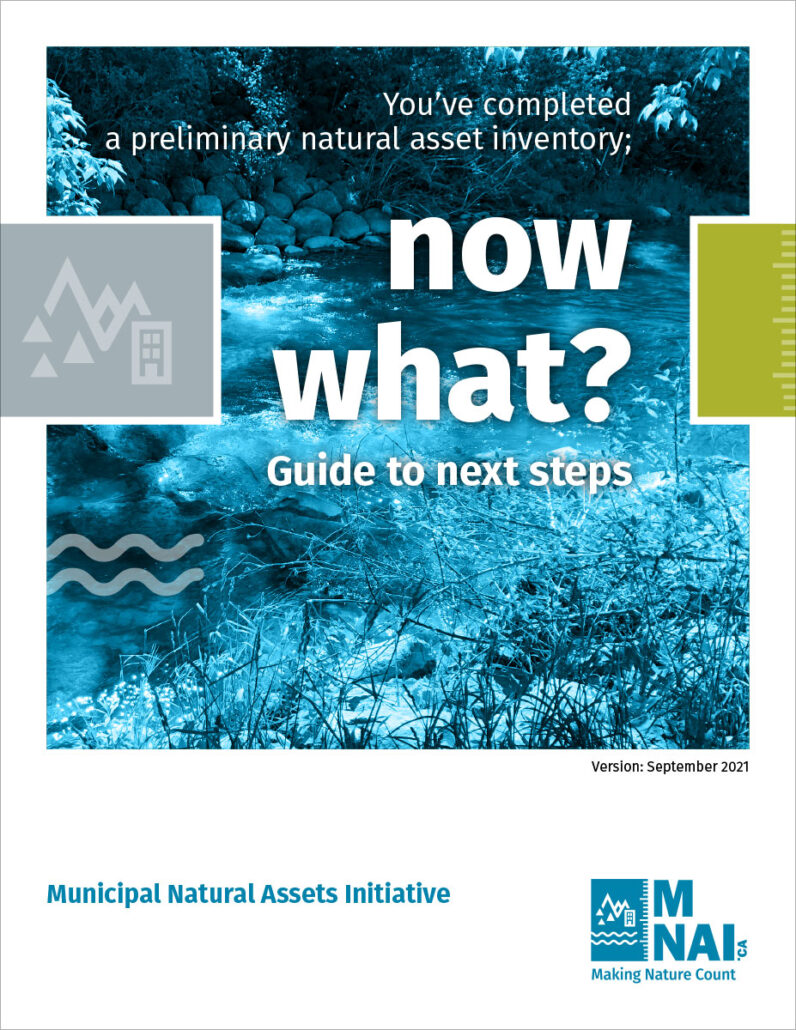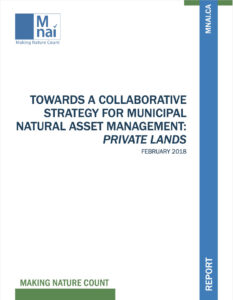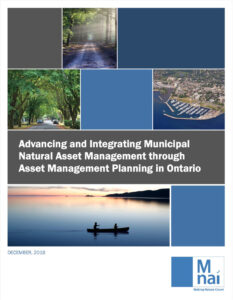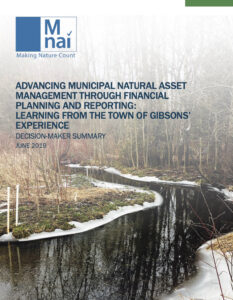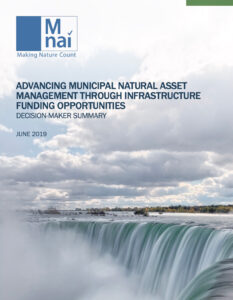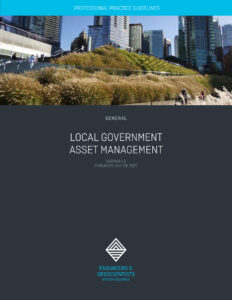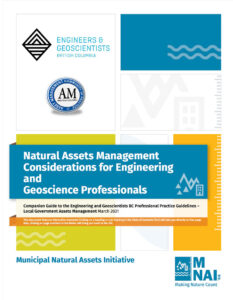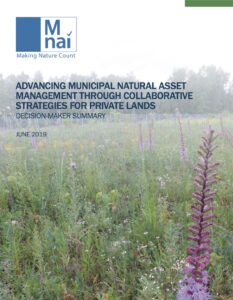Introduction to municipal natural asset management
Defining and Scoping Municipal Natural Assets
The Municipal Natural Assets Initiative (MNAI) is changing the way municipalities deliver everyday services, increasing the quality and resilience of infrastructure at lower costs and reduced risk. The MNAI team provides scientific, economic and municipal expertise to support and guide local governments in identifying, valuing and accounting for natural assets in their financial planning and asset management programs, and in developing leading-edge, sustainable and climate resilient infrastructure.
Primer to chart your course towards Natural Asset Management
This primer will:
- Introduce you to Municipal Natural Asset Management
- Explain why it is important to consider natural assets as part of your
overall asset management strategy - Help you chart your community’s course towards implementing
Municipal Natural Asset Management
Green Growth Knowledge
This paper documents an emerging strategy to manage natural assets such as woodlands, wetlands, and creeks in urban areas as part of a sustainable infrastructure strategy. Specifically, the paper explores Canadian local government experience through the Municipal Natural Assets Initiative (MNAI) to identify, value, and account for natural assets’ contribution to municipal government service delivery, services that would otherwise need to be delivered by engineered assets.
Case studies
Investing in Watersheds:
Towards Scalable, Outcomes-Based Financing for Natural Assets
This report is the culmination of Phase I of the three-phase Investing in Watersheds project and builds on previous efforts in the Grindstone Creek watershed, which began in 2019 in collaboration with NAI, Conservation Halton, the City of Hamilton, the City of Burlington, the Royal Botanical Gardens, and the Greenbelt Foundation.
This report includes:
- An overview of the existing investment instruments operating to support watershed health for Grindstone Creek
- Types of watershed investment instruments that could be accessed by applying the Grindstone Creek Natural Asset Management Project findings
- General watershed investment principles that could be considered when designing a watershed investment approach that is inclusive, scalable, and durable
- An overview of the Common Asset Trust (CAT) financing model proposed to support investment in the restoration, protection, and management of biodiversity, ecosystems, and ecosystem services for the Grindstone Creek Watershed
Acknowledgments
This report was prepared by NAI and Dark Matter Labs (DML). The project builds on efforts in the Grindstone Creek watershed, which began in 2019 in collaboration with NAI, Conservation Halton, the City of Hamilton, the City of Burlington, the Royal Botanical Gardens, with funding generously provided by the Greenbelt Foundation.
Watershed Partners and Grindstone Creek Working Group: Conservation Halton, the City of Hamilton, the City of Burlington, NAI, and DML.
This project was financially supported by Environment and Climate Change Canada. Co-operators is thanked for committing funds to the next phase of work following this report
Getting Nature on the Balance Sheet
The services that nature provides for Canadians are not routinely valued in investment decisions, asset management or financial reporting. As a result, economic decisions continue to lead to the degradation of natural assets, such as rivers, wetlands, and forests. Getting Nature on the Balance Sheet: Recognizing the Financial Value Provided by Natural Assets in a Changing Climate, co-authored by the University of Waterloo’s Intact Centre on Climate Adaptation, KPMG and the Municipal Natural Assets Initiative, argues for a revamp of accounting rules to safeguard natural resilience.
Results from the first national cohort
In 2016-17, five pilot communities tested and refined the municipal natural asset management approach and methodology: the City of Nanaimo, BC, Town of Grand Forks, BC, District of West Vancouver, BC, Town of Oakville, ON, and the Region of Peel, ON. Each community selected a natural asset of interest within their jurisdiction with which to pilot municipal natural asset management, and the MNAI team worked closely with municipal staff to guide them through the methodology.
Results from the second national cohort
This Project Overview document outlines the findings of, and lessons learned by, six local governments as they investigated how natural assets are benefiting their communities, how to increase resiliency under future climate scenarios, and what economic value is being derived from these natural assets. While the focus was on water quality and quantity benefits, numerous other benefits were also identified for future analysis.
Resources for local governments
Nature is Infrastructure: How to Include Natural Assets in Asset Management Plans
This Guidebook provides direction and insight for Canadian local governments who are seeking to undertake natural asset management through asset management planning.
This Guidebook helps close the gap between mainstream practices, infrastructure challenges, and natural asset solutions by aligning natural asset management with approaches already in place for built assets while:
- Using the most current and widely adopted lexicon for natural assets
- Recognizing that natural assets have some unique attributes and functions (e.g., much longer or indefinite lifecycles) that do not always allow them to fit neatly into the same “boxes” as built assets
Legal Primer – Natural Asset Management by Local Governments in Canada
A resource for local governments and elected officials, this primer highlights potential legal issues and liability for local governments, as well as legal tools to help ensure nature and the services it provides are protected. With analysis of current environmental governance in four sample provinces — Alberta, British Columbia, New Brunswick and Ontario — the legal primer provides practical, relevant information on environmental governance related to natural assets and management of nature’s services in Canada.
Developing Levels of Service for Natural Assets: A Guidebook for Local Governments
Local governments in Canada are responsible for providing their citizens and businesses with sustainable, cost-effective services such as transportation, parks and recreation, drinking water, and protection from flooding. Local governments are beginning to understand that natural assets like forests, rivers, lakes, wetlands and parks can make big contributions towards delivering these services, underpin a community’s quality of life, and help meet global challenges like biodiversity protection and building resilience to the impacts of climate change.
What next? Guide to next steps
Congratulations on completing your natural asset inventory! Inventories are an essential first step in the full natural asset management project. They provide details on the types of natural assets a local government relies upon, some details of their condition, some risks they face, but not a sense of asset services or their values.
This What now? Guide to next steps walks local governments through how to progress from your preliminary inventory to a full natural asset management project.
How to include private lands/landowners
This Project Overview document outlines the findings of, and lessons learned by, six local governments as they investigated how natural assets are benefiting their communities, how to increase resiliency under future climate scenarios, and what economic value is being derived from these natural assets. While the focus was on water quality and quantity benefits, numerous other benefits were also identified for future analysis.
How to navigate and implement O. Reg. 588/17: a 13-step framework for Ontario municipalities
Ontario is the first province in Canada to regulate asset management planning at the municipal level. To help municipalities navigate and implement O. Reg. 588/17 as it relates to integrating natural assets and natural asset management, MNAI has developed this report that explains the strategic opportunities and advantages of adopting natural asset management, how to develop the strategy, a 13-step framework that municipalities can easily follow, and finally case studies as examples.
How to include natural assets in financial planning and reporting: Town of Gibsons
How to find infrastructure funding opportunities
Advancing Municipal Natural Asset Management Through Infrastructure Funding Opportunities
Resources for professions
Extending British Columbia’s Engineers and Geoscientists Professional Guidelines to Other Professional Disciplines
Engineers and Geoscientists: professional practice guidelines and aligning with natural assets
Engineers & Geoscientists British Columbia has published its Professional Practice Guidelines – Local Government Asset Management. To accompany the guidelines is MNAI’s Natural Asset Management Considerations document that offers detailed considerations for integrating natural assets effectively into local governments asset management.
How to advance municipal natural asset management through professional planning: 12 action steps
Advancing Municipal Natural Asset Management Through Collaborative Strategies for Private Lands
